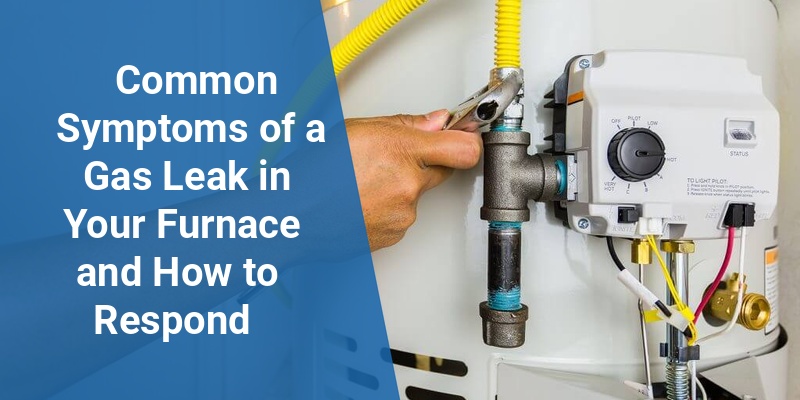Gas leaks in furnaces pose serious health and safety risks. Identifying furnace gas leak symptoms promptly is crucial for preventing potential hazards such as fires, explosions, or carbon monoxide poisoning. This article explores common signs of natural gas leaks in residential furnaces, safety precautions, and professional steps to address leaks efficiently. Recognizing symptoms early can protect your home and ensure safe operation of your heating system.
| Symptom | Description | Potential Risk |
|---|---|---|
| Unusual Smell | Rotten egg or sulfur-like odor from the furnace area | Indicates presence of natural gas leak |
| Dead or Dying Pilot Light | Pilot light frequently goes out or does not stay lit | Poor combustion, possible gas buildup |
| Hissing Sound | Audible hissing near furnace or gas line connections | Gas escaping from pipes or valves |
| Yellow or Flickering Flame | Flame color changes from blue to yellow or flickers | Incomplete combustion, possible carbon monoxide risk |
| Physical Symptoms | Headaches, dizziness, nausea among occupants | Possible carbon monoxide exposure |
| Increased Gas Bill | Unexplained spike in monthly gas usage | Leaking gas wasting fuel and money |
Why Recognizing Furnace Gas Leak Symptoms Is Crucial
Gas leaks are an urgent safety concern. Natural gas is highly flammable and odorized for easy detection. Faulty furnace components or damaged gas lines can result in leaks that threaten lives and property. Awareness of symptoms allows timely intervention, reducing risks of explosions, fires, or prolonged carbon monoxide exposure that can cause severe health effects.
Prompt detection also helps in minimizing costly damage and energy waste. Homeowners who understand these warning signs can take immediate action by shutting off gas supply and contacting professionals.
Common Symptoms of a Furnace Gas Leak
Rotten Egg Odor Near the Furnace
Natural gas contains mercaptan, a chemical added to give it a distinct rotten egg or sulfur smell. If you detect this unusual odor around your furnace or gas appliances, it is a primary indication of a gas leak that requires immediate attention.
Dead or Flickering Pilot Light
A pilot light that consistently goes out or flickers unusually can signal a problem with gas supply or combustion. This may indicate that gas is not burning efficiently, increasing the risk of gas accumulation and potential leaks.
Audible Hissing Noises
Hissing or whistling sounds around the furnace or gas pipes suggest gas escaping through small gaps or faulty connections. This symptom often accompanies the odor but can be a critical cue even if the smell is faint.
Yellow or Flickering Flame Instead of Blue
The burner flame in a furnace should be steady and blue, indicating complete combustion. A yellow or flickering flame points to improper burning of gas, which can produce carbon monoxide, a deadly gas.
Call 888-906-9139 for Free Local HVAC Quotes – No Obligation, Just Savings!
Physical Symptoms in Occupants
Exposure to leaking natural gas or carbon monoxide can cause headaches, nausea, dizziness, and fatigue. If multiple household members experience these symptoms especially when the furnace is operating, it is a serious warning sign.
Unexplained Increase in Gas Bills
A sudden rise in natural gas costs without changes in usage patterns may indicate a leak in the furnace or gas lines wasting fuel.
Additional Signs to Watch For
- Rust or Corrosion on gas pipes or furnace components, which could create weak points prone to leaks.
- Dead Vegetation near outdoor gas lines, signaling underground leaks.
- Soot or Black Marks around the furnace area, indicating combustion problems.
What To Do If You Suspect a Furnace Gas Leak
Immediate safety is critical. Follow these steps if you notice symptoms of a gas leak:
- Do not operate electrical switches or appliances, as sparks can ignite gas.
- Ventilate the area by opening doors and windows.
- Shut off the main gas valve if accessible.
- Evacuate the premises and call your gas company or emergency services from a safe location.
- Do not re-enter the home until professionals declare it safe.
Prevention and Regular Maintenance
Preventing gas leaks starts with regular furnace inspection and maintenance by licensed HVAC technicians. Key practices include:
- Annual checking of gas line integrity and furnace components.
- Testing carbon monoxide detectors monthly to ensure functionality.
- Replacing worn or damaged parts promptly.
- Ensuring proper ventilation around the furnace.
These steps help detect leaks early, improve furnace efficiency, and enhance home safety.
Technology and Tools for Detecting Furnace Gas Leaks
Modern diagnostic tools improve gas leak detection accuracy, including:
- Electronic Gas Leak Detectors that sense propane or natural gas concentrations.
- Infrared Cameras detecting temperature anomalies indicating leaks.
- Carbon Monoxide Monitors alerting rising harmful gas levels inside homes.
Homeowners can also install smart gas leak detectors that send alerts to smartphones, enabling quick responses.
Call 888-906-9139 for Free Local HVAC Quotes – No Obligation, Just Savings!
Understanding the Risks of Ignoring Furnace Gas Leak Symptoms
Failing to recognize and respond to gas leaks can lead to:
- Fire or explosion due to gas accumulation in confined spaces.
- Carbon monoxide poisoning, causing fatal health emergencies.
- Structural damage to the home from combustion events.
- Increased energy expenses from fuel loss.
Awareness and timely action safeguard both lives and property.
